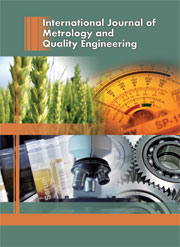Article contents
Measurement of the perceived quality of a product
Characterization of aesthetic anomalies
Published online by Cambridge University Press: 07 November 2013
Abstract
For some companies, visual inspection has become an essential step when seeking to improve the quality of their products. The aim of this control is to be sure of the perceived quality of the product, which often goes well beyond the quality expected by the customer. For this type of control, the controller should be able to detect any anomaly on a product, characterize this anomaly, and then evaluate it in order to decide if the product should be accepted or rejected. This paper describes how this characterization can be carried out and, more specifically, how to measure the impact of the local environment of an anomaly on the perceived quality of the product.
Information
- Type
- Research Article
- Information
- International Journal of Metrology and Quality Engineering , Volume 4 , Issue 2 , 2013 , pp. 63 - 69
- Copyright
- © EDP Sciences 2013
References
- 4
- Cited by

